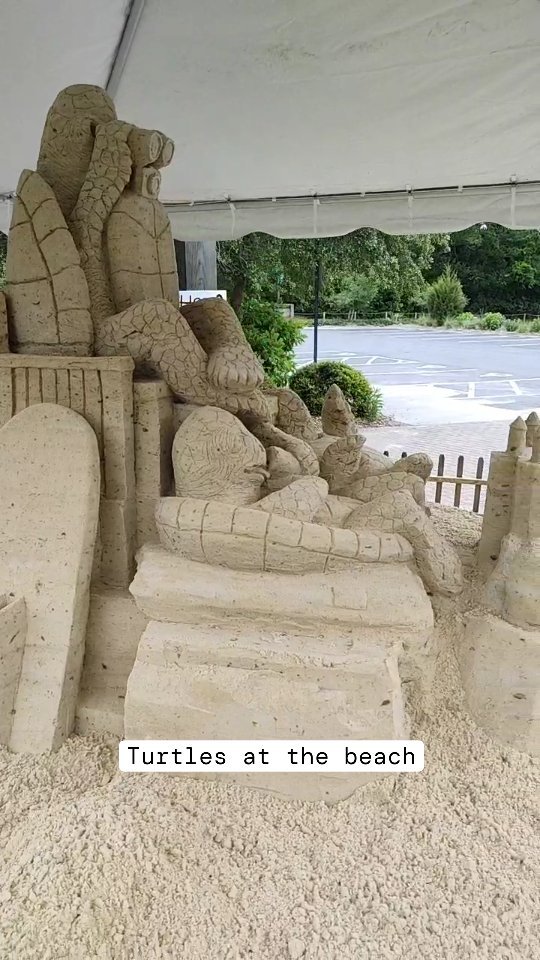- The science of sand sculpture: understanding the materials and techniques used by Sandy Feat.
- How Sandy Feat’s work connects to animal behavior and habitat conservation in zoology.
- The role of arts in zoo management and wildlife conservation education.
Sand sculpture, a fascinating intersection of art and science, offers an intriguing window into the world of zoology and environmental conservation. On day three of Sandy Feat’s sand sculpture carving, we venture into the meticulous process that transforms simple grains into awe-inspiring structures that can engage the public with crucial conservation messages.
In creating their detailed sculptures, the artists at Sandy Feat harness a thorough understanding of the physical properties of sand. Key to the process is the correct selection of sand. Ideal sand for sculpture has sharp edges and generally comes from rivers and quarries, unlike the round grains commonly found on beaches. This angular nature allows for better cohesion when mixed with water, a vital component for stability. The artists then apply specific methods such as compacting, pressing sand into densely packed layers, and carving, where the fine details that breathe life into the piece are crafted.
During day three, the team at Sandy Feat focuses on refinement. After establishing the larger forms in the first two days, they hone in on the minute textures and features defining their subject. This requires a deep understanding of their tools, which range from simple shovels and trowels for the broader strokes to dental instruments and paintbrushes for delicate work.
Linking this craft to zoology, where behavior and habitat of animals are central themes, these sculptures often depict creatures in beautifully realistic forms, allowing viewers to marvel at the intricacies of the biodiversity around us. Sand sculptures can be a powerful medium for conveying messages about ecological systems and their creatures. As the artists carve out habitats and the animals within, spectators are given a tangible vision of the environment that needs to be preserved and the biodiversity at risk.
The interpretation of the behavior of the animals depicted in the sculptures is paramount. Accuracy in representation extends beyond mere appearance; it encompasses the stance, the perceived movement, and the interaction between creatures in a shared environment. Detailed sculptures might show a bird in mid-flight, muscles and feathers rendered so that it seems caught in a snapshot of life. Such moments of realism can enlighten the public about the beauty and complexity of animal behavior and highlight the need for conservation efforts.
Art can thus serve as a silent yet potent educator in wildlife conservation. Integrating artistic initiatives like sand sculpture carving within the strategic objectives of zoo management can enhance the visitor experience and increase the impact of educational messages. Sand sculptures in zoos can attract attention and spark conversations, leading to a heightened awareness of the delicate state of the natural world.
Management strategies that include art boost engagement and foster an emotional connection with wildlife, encouraging public support for habitat preservation and conservation funding. When viewers see threatened species and their ecosystems captured in such transient yet powerful forms, the urgency of protecting these environments can become more tangible and immediate.
In conclusion, day three of Sandy Feat’s sand sculpture carving is much more than an artistic endeavor; it is a nexus where environmental education, zoology, and skillful craftsmanship meet. The slow transformation of sand into detailed depictions of wildlife serves as an artistic spectacle and a potent vehicle for environmental advocacy and learning. Through understanding the process behind these enthralling sculptures, one can gain a deeper appreciation for both the art form and the conservation messages it serves to amplify.
*****
Source Description
Day three of sand sculpture carving by Sandy Feat!


